hankyoreh
Links to other country sites 다른 나라 사이트 링크
Chun Doo-hwan arrived in Gwangju by helicopter before troops opened fire on civilians
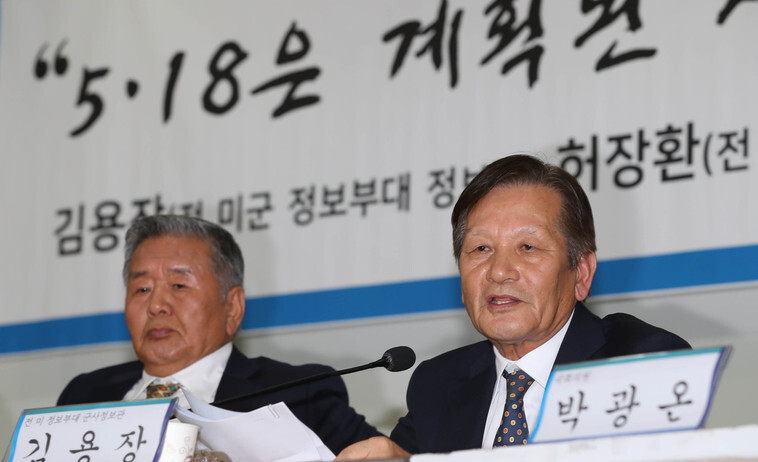
The US Army confirmed the existence of a South Korean Security Command special forces unit of “plainclothes operatives” and reported it to the US Department of Defense during the Gwangju Democracy Movement in May 1980, an eyewitness claimed. Concrete evidence was also presented to suggest that claims of Gwangju being infiltrated by North Korean special forces during the events of the democracy movement – at a time when the Korean Peninsula was subject to close observation by two US military spy satellites – are false.
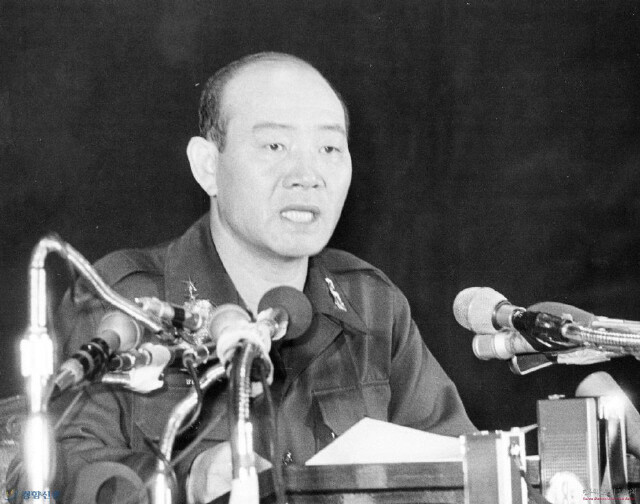
Security Command special forces unit
In a May 13 press conference at the National Assembly Members’ Hall, Kim Yong-jang, who operated in May 1980 as a military intelligence officer in a team deployed to Gwangju from the US Army’s 501st Military Intelligence Brigade, recalled meeting Security Command special forces troops at the time.
“They were known as the ‘plainclothes operatives,’ and after receiving intelligence that plainclothes soldiers posing as citizens had arrived at the 1st Fighter Wing’s Gwangju Air Base on May 20, I saw them again with my own eyes,” Kim recalled. According to his report, around 30 to 40 plainclothes team members arrived by C-130 transporter from Seongnam Air Base and remained stationed in a hangar at Gwangju Air Base while they infiltrated downtown Gwangju aboard a civilian bus.

“The plainclothes operatives were sent by the Defense Security Command (DSC), and it was reported to the US Defense Department that Hong Seong-ryul, commander of the I Corps defense security unit, and Seo Ui-nam, chief of the DSC Gwangju branch unit’s (505 defense security unit) anti-Communist division, had arrived at the Gwangju Air Base to direct them,” Kim said. Plainclothes unit members during the events in Gwangju disguised themselves as demonstrators to perform advanced operations in addition to their duties of arresting leaders and engaging in pacification activities.
Alleged Gwangju visit by Chun Doo-hwan
Intelligence was also reported to the US Defense Department about then Security Commander Chun Doo-hwan arriving in Gwangju by helicopter just before martial law forces opened fire on civilians on Gwangju’s Geumnam Road on May 21, 1980, Kim said.
“At around noon on May 21, Security Commander Chun Doo-hwan arrived at K-57 (1st Fighter Wing, Songjeong neighborhood of Gwangju’s Gwangsan district),” he recalled.
“This is an immovable fact, and it was reported to higher levels,” he said. It was around 1 pm on May 21 when shots were fired on innocent civilians on Geumnam Road during the Gwangju Democracy Movement.
“[Chun] arrived by helicopter and had a meeting in the K-57 wing commander’s office as soon as he came. Around four people attended the meeting, including Special Operations Commander Jeong Ho-yong, 505 DSC Gwangju branch unit Chief Lee Jae-woo, and one other person who was not identified by name,” Kim said.
Regarding the reason for Chun’s visit to Gwangju, Kim said it was his personal belief that “the order to open fire – to order to kill, to put it bluntly – was issued there.” According to aircraft support details from the Army Headquarters’ operation education staff’s “operational situation ledger” for May 21, 1980, the Special Forces Commander and one other person used a UH-1H utility helicopter from 8 to 10:20 am that day.
A figure close to Chun said that the former president “has no connections with the Gwangju incident” and that Kim’s claims “are not even worth mentioning.” Jeong Ho-yong insisted that he “never met with the DSC Commander Chun in Gwangju during the incident.”
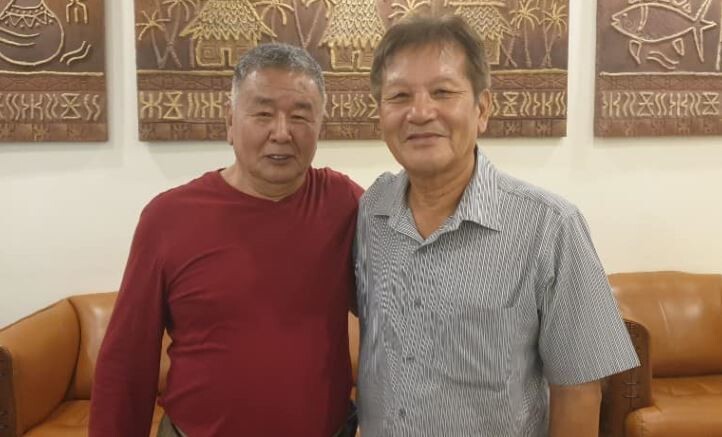
N. Korean troop infiltration an impossibility
Evidence also emerged to suggest North Korean troops could not have infiltrated Gwangju at the time.
“It would have been impossible for 600 North Korean soldiers to evade the US military’s state-of-the-art surveillance network,” Kim insisted.
“Two US military spy satellites were conducting reconnaissance operations over the Korean Peninsula at the time, and the two satellites – one at a high altitude and one at a low altitude – were focusing their reconnaissance in particular on North Korea and Gwangju,” he said. According to Kim’s account, the Korean Peninsula was being closely monitored by early warning aircraft and AWACS, with real-time photography and communications interception. Ji Man-won and other conservative commentators have claimed that the Gwangju Democracy Movement was an “uprising incited by intervening North Korean soldiers.”
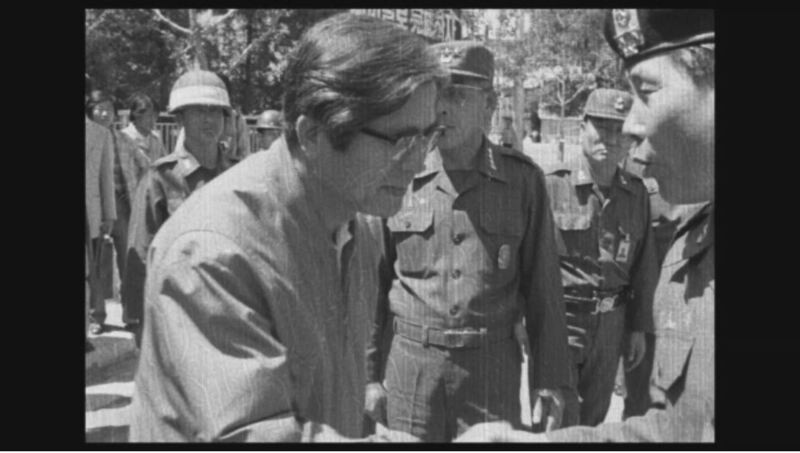
Kim Yong-jang reported around 40 items of intelligence to the US Defense Department while working as a military intelligence officer in a team deployed to Gwangju from the US Army’s 501st Military Intelligence Brigade, which was operating in South Korea during the events in Gwangju in May 1980. The intelligence he and others provided was relayed through the US Army Intelligence and Security Command and assembled by the Pentagon’s Defense Intelligence Agency to be reported to the White House.
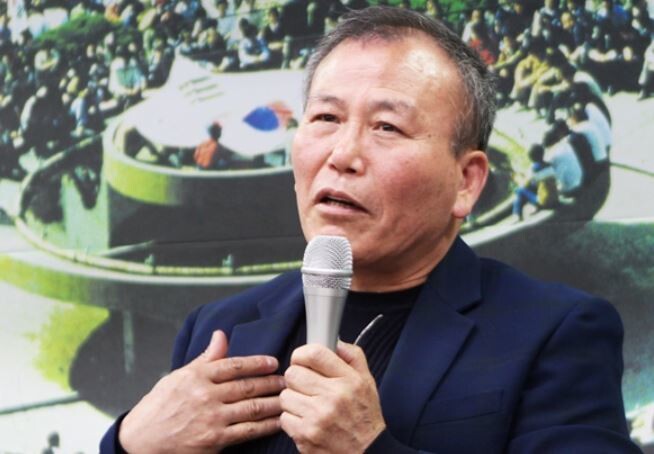
By Jung Dae-ha, Gwangju correspondent, and Kim Kyu-nam and Lee Jeong-gyu, staff reporters
Please direct comments or questions to [english@hani.co.kr]

Editorial・opinion
![[Guest essay] The real reason Korea’s new right wants to dub Rhee a founding father [Guest essay] The real reason Korea’s new right wants to dub Rhee a founding father](https://flexible.img.hani.co.kr/flexible/normal/500/300/imgdb/original/2024/0423/8317138574257878.jpg) [Guest essay] The real reason Korea’s new right wants to dub Rhee a founding father
[Guest essay] The real reason Korea’s new right wants to dub Rhee a founding father![[Column] ‘Choson’: Is it time we start referring to N. Korea in its own terms? [Column] ‘Choson’: Is it time we start referring to N. Korea in its own terms?](https://flexible.img.hani.co.kr/flexible/normal/500/300/imgdb/original/2024/0423/3617138579390322.jpg) [Column] ‘Choson’: Is it time we start referring to N. Korea in its own terms?
[Column] ‘Choson’: Is it time we start referring to N. Korea in its own terms?- [Editorial] Japan’s rewriting of history with Korea has gone too far
- [Column] The president’s questionable capacity for dialogue
- [Column] Are chaebol firms just pizza pies for families to divvy up as they please?
- [Column] Has Korea, too, crossed the Rubicon on China?
- [Correspondent’s column] In Japan’s alliance with US, echoes of its past alliances with UK
- [Editorial] Does Yoon think the Korean public is wrong?
- [Editorial] As it bolsters its alliance with US, Japan must be accountable for past
- [Guest essay] Amending the Constitution is Yoon’s key to leaving office in public’s good graces
Most viewed articles
- 1[Guest essay] The real reason Korea’s new right wants to dub Rhee a founding father
- 2[Column] ‘Choson’: Is it time we start referring to N. Korea in its own terms?
- 3Why Korea shouldn’t welcome Japan’s newly beefed up defense cooperation with US
- 4Senior doctors cut hours, prepare to resign as government refuses to scrap medical reform plan
- 5Terry Anderson, AP reporter who informed world of massacre in Gwangju, dies at 76
- 6New AI-based translation tools make their way into everyday life in Korea
- 7[Column] The clock is ticking for Korea’s first lady
- 8Opposition calls Yoon’s chief of staff appointment a ‘slap in the face’
- 9[Column] The president’s questionable capacity for dialogue
- 10Korean government’s compromise plan for medical reform swiftly rejected by doctors